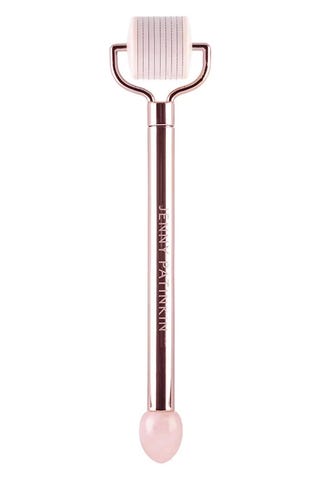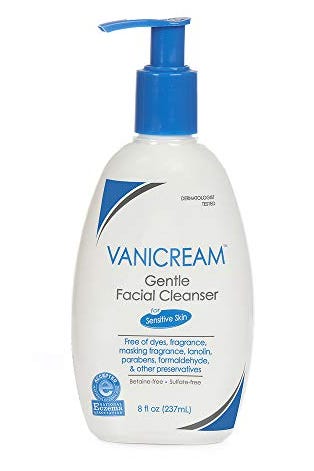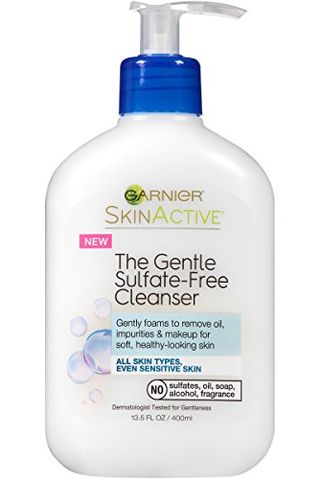Can I Use Lactic Acud With Berma Roller
With skincare devices launching as often as Kylie drops a new product, it's hard to (a) keep up and (b) know what's actually worth it. On this week's made-up episode of Does It Work? Should I Buy It?: dermarollers. What is dermarolling? Is it the same as microneedling? Should you try it? Will it completely destroy your skin? Hey, I hear you—I had the same questions. So let's start with the basics:
What is dermarolling?
Dermarolling is the act of using a dermaroller—a handled roller covered in small, fixed needles (usually 0.3 mm or smaller) that you manually roll over your clean skin—to create micropunctures on your face. The purpose of these ultra-tiny wounds is to help the skincare products you use after you dermaroll penetrate deeper into your skin, making them even more effective.
Dermarollers Worth Your Money

Ora Microneedle Face Roller System

StackedSkincare Micro-Roller .2mm

BeautyBio GloPRO Microneedling Regeneration Tool

Jenny Patinkin Rose on Rose Derma Roller
What's the difference between dermarolling and microneedling?
- Dermarollers use fixed needles on a roller head (again, 0.3 mm or smaller) to create ultra-tiny pricks in the skin, while microneedling uses vibration (this helps distract from the pain) and a needle width that ranges from 0.25 mm to 3 mm.
- Dermarolling is typically done at home, whereas microneedling is done in-office.
- Both devices only puncture the skin's outer layer (the epidermis), but dermarolling typically only pricks the skin, promoting increased product absorption, while microneedling goes a little deeper, gently wounding it and triggering the natural production of collagen and elastin. "You could probably find the depth that a professional uses on eBay, but I don't recommend that, since you can scar yourself if you don't know what you're doing," says licensed physician assistant Lisa Goodman, cofounder of Goodskin Clinic.
"Scarring is interesting because you can both create a scar with trauma [through microneedling], but you can also heal a scar with trauma," says Goodman. "It's all about knowing how deep to push the needles on different parts of your face that will determine how you heal." Which, heads up, is why microneedling and dermarolling will always be safest when performed by a professional.
This content is imported from {embed-name}. You may be able to find the same content in another format, or you may be able to find more information, at their web site.
How do you use a dermaroller?
You'll want to use back-and-forth motions with a medium amount of pressure over your face, except on any bony areas, like your cheekbones, nose, forehead, etc. These areas call for super-light pressure to avoid creating prick marks on your skin from the needles.
Also good to note: The skin under your eyes is very similar to the skin on your neck. There aren't any oil glands and it's much thinner, so you'd treat those two areas the same: Be gentle and do one roller pass to see how your skin reacts. If your skin falls on the sensitive side (aka it becomes pink or red right after you do a single pass), stick to dermarolling once or twice (at most!) a week.
This content is imported from Instagram. You may be able to find the same content in another format, or you may be able to find more information, at their web site.
Most important: "If you have active acne, stay away from rolling over any pustules, since doing so can spread the bacteria to different areas of your face," adds Mashell Tabe, a medical aesthetician and intuitive energy worker. Basically, if you're in the middle of a massive breakout, keep the needles away—they can make things worse.
Can I wash my face after dermarolling?
"You'll definitely want to cleanse your face first at home, since you don't want to be pushing any dirt or bacteria into the skin as you pass the tiny needles over it," says Tabe. "Plus, the cleaner your skin is, the better the penetration will be when it comes to your product's ingredients, since there won't be any buildup blocking it from being absorbed." So cleanse first with a creamy, sulfate-free, gentle face wash.

For "regular" skin
Neutrogena Ultra Gentle Hydrating Cleanser

For dry skin
Dove DermaSeries Fragrance-Free Face Wash for Dry Skin

For sensitive skin
Vanicream Gentle Facial Cleanser

For oily skin
Garnier SkinActive Gentle Face Wash
What should I put on my face after dermarolling?
"Start off with the thinnest and most active formulas first," explains Tabe. "Think runny liquids (like serums) first, and then move toward the thickest viscosity (a face cream). If your skin is primed to handle retinol (aka you're not using it for the first time ever in life after dermarolling for the first time), mix it with hyaluronic acid and apply it after you've cleansed, before sealing it in with a thicker cream.
A warning to heed: Goodman suggests skipping salicylic, lactic, and glycolic acids after dermarolling because they can cause further irritation.
Is dermarolling really effective?
"You're obviously not going to get the same results you'd get if you opted for microneedling at a doctor's office, but doing it a couple of times a week is helpful for product infusion if you're using good ingredients after," explains Goodman. She recommends using a high-dose antioxidant or vitamin C serum or growth factor serums that are full of fibroblasts that help your skin renew and heal quickly, like Skinceuticals Phfloritin CF or Bioserum by Neocutis, which is a paraben-free peptide and human growth factor blend.
Overall, though, Goodman says you should see brighter skin quickly (possibly even the next day), since your products will be penetrating better. But skincare takes about a month to make a noticeable difference in your skin, Goodman adds. With microneedling, it takes about two to three months to see an actual visible difference when it comes to wrinkles, acne scars, and stretch-mark rejuvenation.
Who is dermarolling best for?
"If someone is going to do it at home and use a needle size of, say, 0.25 mm, then it'll be good for product delivery," says Goodman. "If you're going to go up to 0.5 or 1 mm, then y0u'll start to target wrinkles, acne scars, and stretch marks." So pick your roller based on the effects you're looking for.
Does dermarolling hurt?
It depends on the depth, says Goodman. "If you're talking about 0.25 mm, it's going to just feel a little annoying; if you're opting for microneedling (in-office), it's definitely going to hurt more, but we would also use a numbing cream first," she says.
How often should I switch out my dermaroller?
It's smart to change your roller head every three to six months, since the points on the roller will inevitably dull. As far as taking care of your tool after each use: Tabe suggests rinsing your product with hot water at the end of each roller sesh before dipping it in 75 percent isopropyl alcohol for five minutes to ultimately sterilize it. Also, try using a gold-plated dermaroller, which is naturally antibacterial and can also help with cleanliness. But Goodman still recommends cleaning it with alcohol before and after each use to avoid introducing outside bacteria into your skin.
This content is created and maintained by a third party, and imported onto this page to help users provide their email addresses. You may be able to find more information about this and similar content at piano.io
Can I Use Lactic Acud With Berma Roller
Source: https://www.cosmopolitan.com/style-beauty/beauty/a30443411/what-is-derma-rolling/
Belum ada Komentar untuk "Can I Use Lactic Acud With Berma Roller"
Posting Komentar